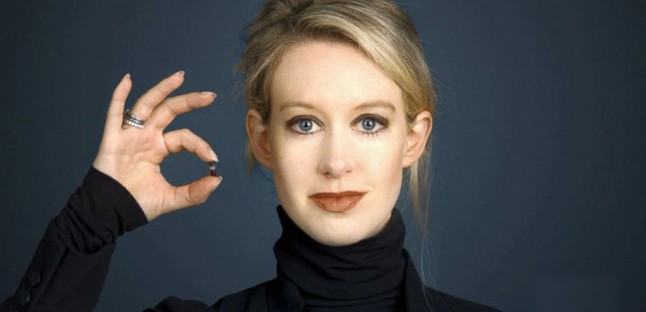Latest posts
A masterclass in creating value
What’s going on at parkrun?
Virtue-signalling all the way to the bank
Bud Light: brand purpose or virtue-signalling?
The Coddling of the American Mind, by Greg Lukianoff and Jonathan Haidt
Belonging, by Owen Eastwood
Such a simple thing
The Long Win, and The Scout Mindset
The Cult of We by Eliot Brown and Maureen Farrell
Coffee and covid modelling
By theme
Marketing strategy
Insight & metrics
Innovation & inspiration
Brand & positioning
Marketing communications
Business purpose
Leadership
By industry sector
Financial services
Retail
FMCG
Technology & start-ups
Consumer services
Business to business
Other sectors
By type
Books
Comment
Quotes
Thought leadership
Innovation. Should you fail fast, or never give up? How can you tell a good idea, not yet solved, from a hopeless one? Elizabeth Holmes of Theranos never gave up. She named her invention the Edison, in honour of the American inventor of the lightbulb, Thomas Edison. He supposedly said, “I haven’t failed, I’ve found 10,000 ways it doesn’t work.”
Holmes’s company was reported to be worth $10 billion by 2013 and she was a paper billionaire. Now she’s facing fraud charges. Yet her purpose, to make blood screening for infection and disease accessible to all, was laudable. Her idea was to miniaturise blood analysis machines so that one piece of kit the size of a desktop printer could screen for many diseases, using a single blood sample from a simple pinprick on the finger instead of an intrusive needle in the arm. Great idea. Hugely desirable aim. Solves many problems with the current approach. No wonder the great and good of US politics and business pumped $700 million into Theranos. Rupert Murdoch invested $125m. He ended up with nothing. In 2015 it all unravelled amid scandal and accusations of fraud, and the company collapsed, worthless.
Was it just that they needed more time? Maybe, if you think twelve years isn’t long enough to make demonstrable progress. Was it wrong to claim they had made a breakthrough, rather than just hoping to? That isn’t unusual in Silicon Valley, where “fake it until you make it” is seen as a sign of confidence in the future.
Failing fast is part of never giving up – as long as the failures are teaching you something. The original Edison’s many failures represented progress towards success. By contrast, it seems Holmes’s main tool was to demand that no one talk down their progress, and just try harder.
Perhaps it simply wasn’t achievable. If it was, someone would have done it already, wouldn’t they? But there’s a counter-argument to this, from Harvard professor Clayton Christensen, which he calls “the innovator?s dilemma”. He says radical innovation isn’t usually in the incumbents’ interests. We’ve seen this in other industries. Until Nest came along, home thermostats were ugly beige boxes that hadn’t changed in decades, making nice money for market leader Honeywell. The global leaders in medical syringes for vaccination, Becton Dickinson, are alleged to have stamped out an upstart competitor that created an alternative syringe (one that prevented reuse and hence the spread of infection), in order to protect BD’s own products. In the case of Theranos, a couple of companies dominated the blood testing industry, with huge labs full of dedicated machines and skilled staff. The fact it’s not yet been done can never be a reason not to try. Here’s how to check you’re on the Edison track and not the Holmes one.
1. Is it just a wish? Idea generation often starts with “I wish there was a ….” “What if we could…” That’s a great way to identify unmet needs. But it’s not, in itself, an idea. “I wish I could fly” only starts to be an idea when someone starts suggesting ways that could be made to happen. A machine with propellers. A suit with air jets. They might not work, but it’s a “how” to work on, to prototype and refine.
2. Is it constrained by real-world physics or chemistry? Most Silicon Valley backed start-ups are for services. Write the code and see if enough people will pay for it. Theranos did have a prototype Edison but it wasn’t remotely viable. Battery size is a major constraint for electric cars. I can put a few bits of copper, lithium and acid in an old tin can and tell you it’s a prototype for a miniaturised car battery. But all I’ve done is illustrate the problem.
3. Is there a credible hypothesis as to how to solve the problem? Try it, test it, improve it. That’s where Edison’s approach was different from Holmes’s wish. With a basic idea about heat and light generated by electrical resistance in metals, Edison kept experimenting until finally something worked. Holmes was not a scientist and relied on staff to work it out. Another lesson. Who’s going to solve this problem you’ve identified? Do the people with the skills believe they can do it? Can they say anything about how? It seems Holmes never did, and investors never got to talk to the experts in R&D.
Latest posts
A masterclass in creating value
What’s going on at parkrun?
Virtue-signalling all the way to the bank
Bud Light: brand purpose or virtue-signalling?
The Coddling of the American Mind, by Greg Lukianoff and Jonathan Haidt
Belonging, by Owen Eastwood
Such a simple thing
The Long Win, and The Scout Mindset
The Cult of We by Eliot Brown and Maureen Farrell
Coffee and covid modelling
By theme
Marketing strategy
Insight & metrics
Innovation & inspiration
Brand & positioning
Marketing communications
Business purpose
Leadership
By industry sector
Financial services
Retail
FMCG
Technology & start-ups
Consumer services
Business to business
Other sectors
By type
Books
Comment
Quotes
Thought leadership
